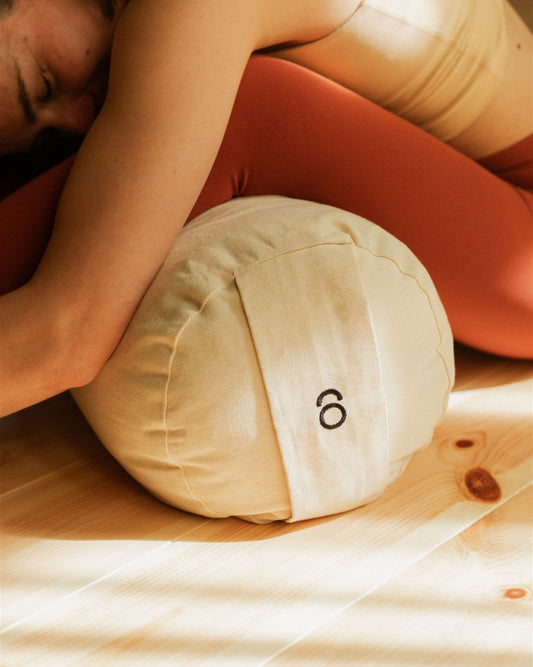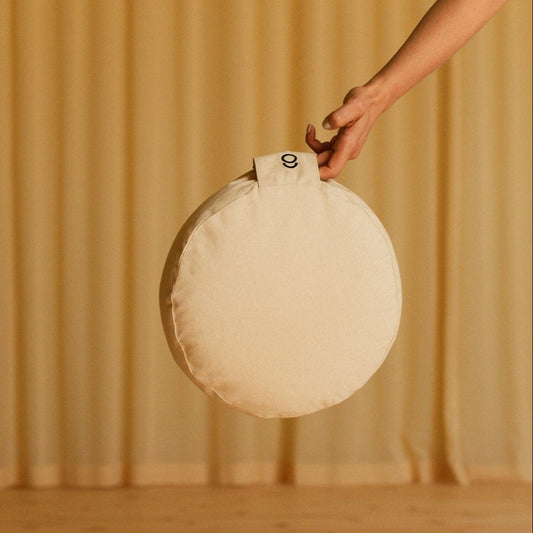Table of Contents
In today's fast-paced world, anxiety and stress have become common challenges for many individuals. The need for effective self-care practices has never been more important. One powerful technique that can contribute to improved mental well-being is body scan meditation. This practice involves directing attention to different parts of the body, promoting relaxation, and cultivating a deeper mind-body connection. In this article, we will delve into the benefits of body scan meditation, its impact on anxiety, and how it can be integrated into a self-care routine. Additionally, we will provide a 1-week time plan to help you incorporate body scan meditation into your daily life.
Understanding Body Scan Meditation:
Body scan meditation is a mindfulness practice that involves systematically focusing attention on different areas of the body. It allows us to develop a heightened awareness of physical sensations, emotions, and tension held within the body. By observing these sensations without judgment, we can cultivate a sense of calm, release stress, and promote overall mental well-being (Gerritsen, 2018).
Benefits for Anxiety and Mental Health:
Body scan meditation has been found to be particularly beneficial for reducing anxiety and improving mental health. By intentionally shifting attention to the body, it helps to ground us in the present moment, breaking the cycle of anxious thoughts and worries. Regular practice can enhance self-awareness, promote relaxation, and improve emotional regulation. Moreover, body scan meditation fosters a sense of self-care and compassion, allowing us to better understand and address our needs. (Goyal, 2014)

Physiological & neurological effects: What happens in the body during a body scan meditation?
During a body scan mindfulness meditation, the practitioner directs their attention to different parts of the body, systematically observing physical sensations without judgment. Scientifically, this practice has been found to elicit several physiological changes. Firstly, it activates the parasympathetic nervous system, triggering the relaxation response. This leads to a decrease in heart rate, blood pressure, and cortisol levels, thereby reducing stress and anxiety.
Additionally, body scan meditation increases body awareness and proprioception—the perception of body position and movement. This enhances interoception, the ability to sense internal bodily sensations. Studies have shown that regular practice of body scan meditation can improve pain management and reduce the intensity of physical discomfort.
Neurologically, body scan meditation engages regions of the brain associated with attention regulation, sensory processing, and self-awareness, such as the prefrontal cortex and insula. These areas play a crucial role in emotional regulation and self-referential processing.
If you want to learn more about the detailed mechanisms in the brain and body, our book "Calm Your Mind. The Art & Science of Meditation. A Beginner's Guide" contains a full chapter about the state of the art of scientific research on meditation.
Moreover, body scan meditation promotes a sense of connectedness between mind and body, fostering body appreciation and acceptance. This can have positive effects on body image and self-esteem.
Overall, the practice of body scan mindfulness meditation induces relaxation, enhances body awareness and interoception, engages specific brain regions, and promotes a positive mind-body relationship, all of which contribute to its benefits for mental health and well-being.

How to do a Body Scan Meditation
- Find a quiet and comfortable space where you can sit or lie down without distractions. If you like use incense like Palo Santo to create a calm atmosphere in the room.
- Close your eyes and bring your attention to your breath, taking a few deep breaths to relax your body and mind.
- Begin by focusing your attention on the top of your head. Slowly scan your body from head to toe, noticing any sensations, tension, or discomfort.
- As you move your attention down, bring a gentle curiosity to each part of your body, including your forehead, eyes, cheeks, jaw, neck, shoulders, arms, hands, chest, abdomen, hips, legs, and feet.
- Observe any sensations or feelings without judgment, simply acknowledging them and allowing them to be as they are. This could be tingeling, temperature, discomfort, itching or nothing.
- If you encounter areas of tension or discomfort, imagine sending your breath and relaxation to those areas, letting go of any tension with each exhale.
- Continue scanning your body, being fully present in each moment and observing the sensations without trying to change anything.
- Finally, when you reach your toes, take a few deep breaths and bring your attention back to your entire body as a whole, feeling a sense of relaxation and groundedness.
- Slowly open your eyes and take a moment to reflect on your experience before resuming your daily activities.
Body Scan Meditation - Tips for Beginners on how to incorporate into a Self-Care Routine
-
Start with realistic goals: Set achievable goals when starting your meditation practice. Begin with short sessions, such as 5-10 minutes, and gradually increase the duration over time. This helps to build consistency and prevents feelings of overwhelm.
-
Choose a consistent time and place: Establish a dedicated time and place for your meditation practice. Having a consistent routine creates a sense of structure and makes it easier to integrate meditation into your daily life. Find a quiet and comfortable space where you can relax and be free from distractions.
-
Use reminders and cues: Use reminders and cues to prompt your meditation practice. Set alarms or notifications on your phone, place post-it notes in visible areas, or link your meditation practice to an existing habit, such as after waking up or before bedtime. These reminders serve as cues to help you remember and stay committed to your meditation routine.
-
Start with guided meditations: If you're new to meditation, guided meditations can be helpful. They provide instructions and support throughout the practice, making it easier to stay focused. Many apps offer guided meditations for beginners.
-
Find a meditation community or partner: Joining a meditation group or finding a meditation buddy can provide accountability and support. Sharing your experiences, challenges, and progress with others who are on a similar journey can help you stay motivated and committed to your meditation practice.
- Be kind to yourself: Remember that meditation is a practice, and it's natural to have days when it feels challenging or when you miss a session. Instead of being self-critical, approach your practice with kindness and compassion. Celebrate your progress and acknowledge that consistency is more important than perfection.
By implementing these tips, you can establish a consistent meditation routine and make it a regular part of your daily life. Over time, you'll experience the benefits of meditation and develop a deeper connection with yourself and the present moment.

7-Days Bodyscan Challenge
To fully experience the benefits of body scan meditation, it is essential to incorporate it into a consistent self-care routine. Here is a 1-week time plan to help you establish a daily practice:

Day 1: Establishing the Foundation
Begin by finding a quiet and comfortable space. Sit or lie down in a relaxed position, close your eyes, and take a few deep breaths. Start by focusing your attention on your breath and gradually shift it to different parts of your body, starting from your toes and moving upward. Spend 5-10 minutes scanning each area, observing any sensations or tension you may notice. You might observe temperature, tingling, tension, discomfort, ease or anything else.
Day 2: Relaxation and Release
Today, place particular emphasis on consciously relaxing each part of your body as you scan through it. As you direct your attention to a specific area, intentionally release any tension you may feel. Breathe into those areas and let go of any stress or discomfort.
Day 3: Cultivating Awareness of Emotions
During today's body scan, pay attention to any emotions that arise as you explore different parts of your body. Observe without judgment, acknowledging any feelings that come up. Allow yourself to fully experience and accept these emotions, cultivating a sense of compassion and self-awareness.
Day 4: Deepening the Mind-Body Connection
As you progress in your practice, aim to deepen your mind-body connection. Notice how different emotions, thoughts, or memories manifest as physical sensations within your body. Take time to explore these connections and gain insights into the interplay between your mind and body.
Day 5: Gratitude and Appreciation
During today's body scan, focus on cultivating gratitude and appreciation for your body. With each area you scan, express gratitude for its functionality and the sensations it provides. This practice can foster a sense of self-love and acceptance.
Day 6: Expanding the Awareness
Today, expand your awareness beyond your physical body. As you scan through each body part, also become aware of the space around it. Notice the energy or sensations that exist beyond your physical boundaries, fostering a sense of connectedness with the world around you.
Day 7: Integration and Reflection
On the final day, reflect on your body scan meditation journey. Take a few moments to journal about your experiences, insights, and any changes you have noticed in your mental well-being. Consider how you can continue incorporating body scan meditation into your self-care routine moving forward.
To summarise:
Body scan meditation is a valuable tool for promoting relaxation, reducing anxiety, and enhancing overall mental health. By dedicating time each day to this practice, you can cultivate a deeper mind-body connection and foster a greater sense of well-being. Incorporate body scan meditation into your self-care routine and experience the transformative effects it can have on your life. Embrace the power of this practice and embark on a journey of self-discovery and inner healing.












